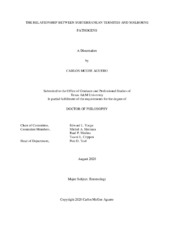| dc.description.abstract | Social insects are among some of the most ecologically successful species. However, social living can also carry severe costs, such as an increased risk of disease transmission. In response, social insects have evolved social immunity, which comprises a variety of defenses that provide colony-wide disease protection. Studies investigating the diversity and success of social immune defenses have largely focused on the social Hymenoptera (bees, wasps, and ants). Termites, however, have independently evolved social immunity and serve as an important counterpoint to studies with Hymenoptera. In this thesis, I investigate several facets of social immunity using the subterranean termite, Reticulitermes flavipes.
In my first two objectives, I tested if changes in genetic diversity influenced social immunity at both the individual and collective levels. In contrast to what has been found in several Hymenoptera species, increased genetic diversity does not appear to improve immunity in R. flavipes. Next, I determined if colonies of R. flavipes are able to manipulate the surrounding environmental microbial communities in order to create more favorable nest conditions. I found that microbial community diversity is significantly reduced in the foraging galleries and on the cuticle, compared to the surrounding soil. In addition, I found evidence that the foraging galleries of R. flavipes host beneficial bacterial associations and colonies may accumulate pathogen loads as they age. My final objective aimed to determine if infected individuals alter their immune behaviors in order to decrease the risk of disease transmission throughout the colony. Termites display shaking alarms in response to pathogens and may become less active as an infection becomes lethal, but I found that these changes in behavior were not influenced by the presence of nestmates. Additionally, instead of self-isolating from the colony, infected individuals congregated with large numbers of workers. Together, these results illustrate how social immunity can be achieved through a variety of mechanisms and highlight the need for further research across different taxa. | en |


